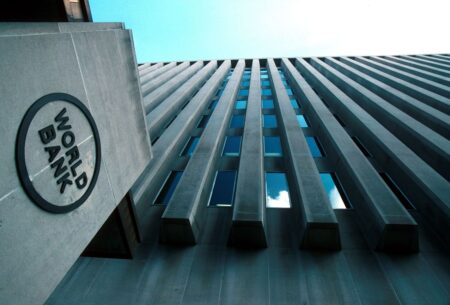- Africa’s new dawn: the rising role of digital and AI in agriculture
- Can Dangote Refinery Transform Africa Energy Ambition
- Gallup Survey: 80 per cent of Kenyan Workers Are Disengaged and Seek New Opportunities
- Madagascar Man Freed from 5KG Tumor After 15-Year Struggle
- How women in Africa are perceived and treated
- Sugar consumption in Kenya to Increase to 1.23 Million Tonnes
- Can Somalia and Turkey Oil deal Bring Change in Somaliland
- Remittances to Kenya dropped to $371.6 million in June, marking a six month low
Browsing: Tanzania world bank loan
- Tanzania’s population is expected to reach 140 million people by 2050.
- The World Bank estimates that Tanzania’s population will double every 23 years.
- Tanzania set to become one of Africa’s and the world’s most populated countries.
Tanzania’s population is expected to reach 140 million people by 2050 given the current high fertility rate of 3.0 per cent. At this rate, the World Bank estimates that Tanzania’s population will double every 23 years henceforth.
In its latest Tanzania Economic Update that was launched in the country’s port city of Dar es Salaam this March, the World Bank says when it comes to population control, the East African country is facing a delicate balance act.
On the one hand, Tanzania has managed to lower its mortality rates and raise its life expectancy but as a result, it is now facing the effects of high birth rates and, they are not all good.…
- The World Bank plans to ease lending terms to increase liquidity.
- Increased disposal income will help reduce global poverty.
- Countries required to highlight financial inclusivity plans.
The World Bank is “taking bold new steps to increase its lending capacity”, a move that will likely trigger various implications for individuals, businesses, and economies across Africa.
In July, US Treasury Secretary Janet Yellen urged further reform of the World Bank and other multilateral development banks. Yellen said capital increases will be an option once these institutions make changes to increase their capacity to assist nations in addressing climate change and other issues.
At the same time, the World Bank President Ajay Banga stated, “We are moving quickly. While we are constructing a better bank, a larger bank will eventually be required.”
Increased lending by the world’s biggest lender will mean increased liquidity all around the world. What this means is that you …
- Africa’s average GDP will stabilize at around 4 percent in the course of the next two years, notes AfDB.
- The continent needs alternative sources of imports and new export markets to counter disruptions caused by the war in Ukraine.
- Economists are urging African economies to look at expediting intra-African trade to stave off global shocks.
A significant number of African nations continue to show economic resilience in the face of tougher global challenges. The latest update by the African Development Bank (AfDB) on economic review says the continent has a stable outlook in the 2023-2024 financial year.
Africa’s Macroeconomic Performance and Outlook report provides an up-to-date assessment of the continent’s macroeconomic performance and a forecast of expected performance on the backdrop of global economic challenges.
Africa average GDP to stabilise at 4 percent
The lender estimates that Africa’s average GDP will stabilise at around 4 percent in the course of …
- Tanzania’s government has banned institutions from using charcoal and firewood for their energy needs.
- Tanzania has lost 16 percent of its forest cover to human-related activities.
- 85 percent of Tanzania’s energy needs are met with charcoal and firewood burning.
To curb the destruction of forests, Tanzania has set a deadline for its own institutions to stop using charcoal and firewood, an ambitious gesture for a country whose 85 percent of energy needs are met through the burning of charcoal and firewood.
As a result of this high dependence on forests for its energy needs, Tanzania’s forests are being depleted at a tremendous pace; 16 percent of forest cover has already been lost to date. At the current rate, Tanzania is losing over 640,429 hectares of forest per year.
The forest loss is mostly blamed on human activities related to unsustainable farming practices, development activities and to meet the huge energy …
- U.S.$304.93 million will go to supportive programmes in sustainable rural water and sanitation
- 300 million US dollars is the International Development Association (IDA) concessional loan
- Another US$ 25 million is also part of the grant money, but this time from the Global Financing Facility for Women Children, and Adolescents Multi-Donor Trust Fund.
Tanzania is to receive U.S.$ 550 million in a concessional loan to improve its Maternal and Child Health programme.
The World Bank loan comes along with a side package of U.S.$ 29.93 million in grant money, the government has reported.
Finance Minister, Hon. Mwigulu Nchemba issued a statement to media specifying the funds’ planned disbursement as follows: U.S.$304.93 million will go to supportive programmes in sustainable rural water and sanitation and U.S.$275 million will go directly to maternal and child health programme.
Of this money, 300 million US dollars is the International Development Association (IDA) concessional loan and …









